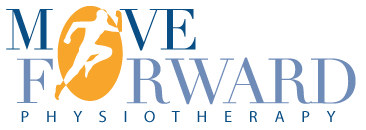Cervical Spine – Cervicogenic Headaches
Physiotherapy is very effective for managing cervicogenic headaches
Headaches are very common. The lifetime occurrence of a headache is 96%. Headaches are the third most common pain condition to the general public, according to the Global Burden of Disease Study. Cervicogenic Headache, occur as a result of cervical spine disorders involving elements such as bony, soft tissue tightness or disc. This leads to head, cervical spine and shoulder stiffness with pain. It is suspected that over 30% of headaches are cervicogenic in origin, and physiotherapists are well placed to determine whether the cervical spine is playing any part in the production of headache symptoms.
The Cervicogenic International Headache Society Group (1998) published the following Diagnostic Criteria for diagnosing cervicogenic headache. 
- Unilateral pain without sideshift (within that episode & typically between) NOTE: Can also be bilateral if bilateral trauma and/or degenerative changes.
- Begins in neck or occiput (maybe with shoulder/arm pain) (compare to migraine – begins in front especially behind the eye)
- Moderate intensity (not stabbing/lancinating, so can carry on activities but not very pleasant)
- Frequency/Duration highly variable – episodic ? continuous (some all the time, some very infrequent)
- Associated symptoms (mild & intermittent)
- Nausea (not very often); dizziness (@ times); photophobia (like hangover – no bright light/loud noise); ‘blurred vision’ (haziness/head feels a bit fuzzy or light)
- Precipitated by neck movement/posture (ranges from very easy to very hard to define) or
- Pain reproduced with external pressure to upper Cervical or occiput or
- Restricted neck mobility (very subtle)
- Positive anaesthetic block (in research and in practice!)
- The upper 3 (C1-3) cervical levels are most commonly involved cervicogenic headaches.
Physiotherapy Treatment Of Cervicogenic Headache
Treatment will include neck joint mobilisations and possible manipulation, soft tissue releases on tight upper quadrant muscles, conservative management (stretches for the deep upper neck muscles, aerobic exercises, body awareness therapy, therapeutic exercises and recommendations for pharmaceutical medication). The physiotherapist may also use dry needling techniques and will give the patient home exercises to assist with management and decrease recurrence.
Multi-Source Headache
It is important to point out that many headache sufferers may suffer multi-source headaches. For example, a Migraine sufferer may simultaneously experience a Tension Type Headache and Neck Headache. Treatment varies depending in the symptoms and headache source.

